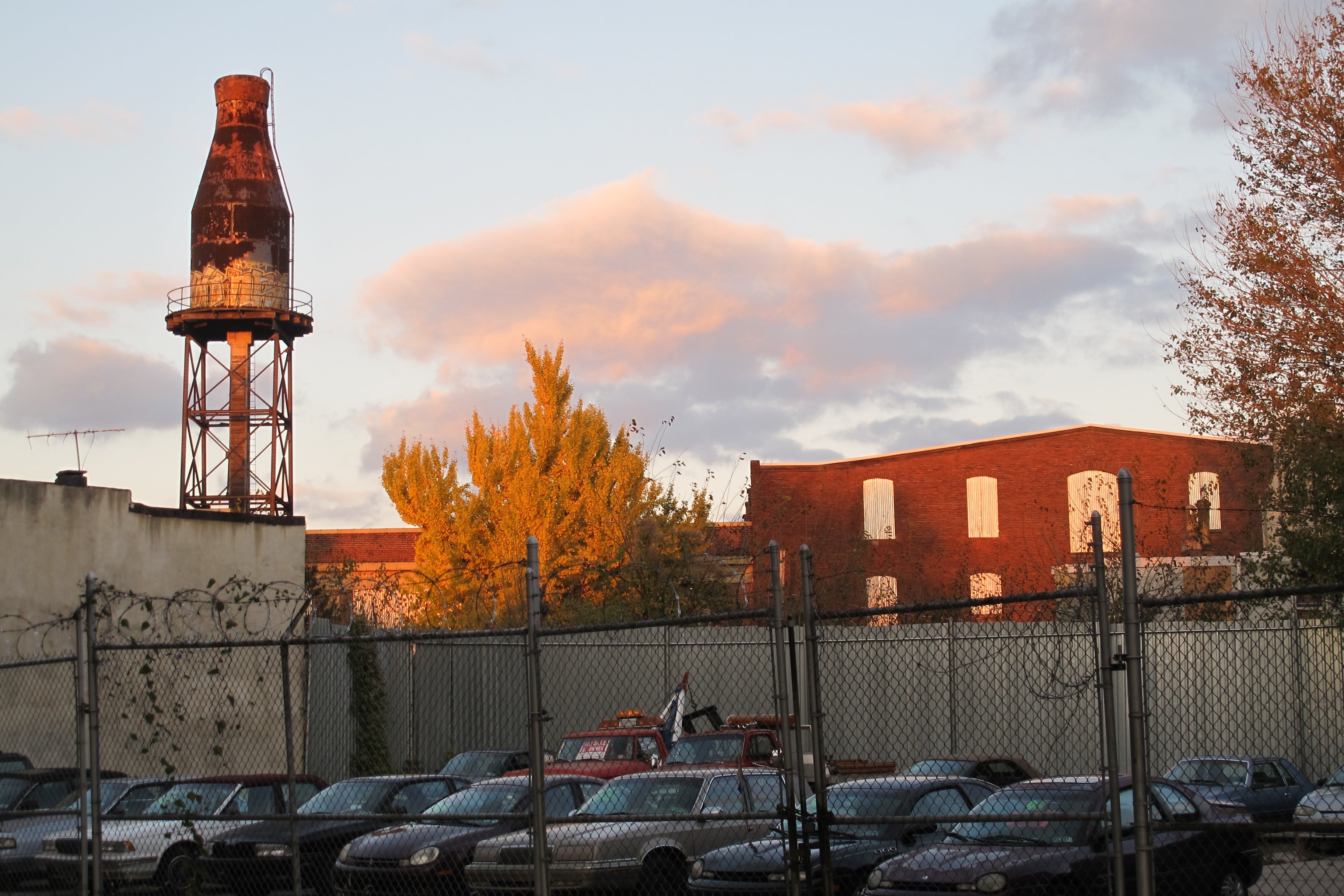Iconic Kensington milk bottle protected from wrecking ball

Kensington’s iconic milk bottle-shaped water tower and the aging industrial building it perches upon can no longer be demolished without a fight. In a unanimous Friday vote, the Philadelphia Historical Commission added the 120-year-old structure to the local historic register. That means it cannot be substantially altered or removed without the permission of the city body, which includes civilian appointees as well city officials.
The Coral Street structure was one part of the Harbisons’ Dairies empire, which had numerous factory and distribution facilities throughout the city of Philadelphia and beyond. The company’s sold off its infrastructure in the 1960s and the dairies closed in 1990. The Kensington structure is the only remnant of the once vast industrial empire.
“Harbison’s Dairies was one of the most important businesses of its kind in the city,” said Oscar Beisert, who nominated the building to the register. “The iconic milk bottle has become a symbol of Kensington and Fishtown too.”
The owner, Fozan Ehmedi, did not dispute the historical value of the milk bottle water tower, long a recognized fixture of the neighborhood. But his lawyer, William Martin, pushed back on the nomination of the vacant industrial warehouse beneath.
Martin argued that the nomination had left out another property that was once part of the factory complex but belongs to a different property owner. That omission, he said, made the designation of the buildings owned by Ehmedi “arbitrary and capricious.” The lawyer said that he believed that the other property owner’s building had been left out for strategic reasons.
Martin also argued that the milk bottle itself may be a neighborhood icon, which makes it worthy of preservation, but he questioned the historical value of the rest of the building. Is merely being part of a successful business enterprise enough to be worthy of a nomination, he asked.
“The milk bottle is appropriate for designation but not the rest of it,” said Martin. “The familiar icon is the water tower. Not the rest, which is just a workaday industrial building.”
Ehmedi could not attend the meeting but his nephew, Adeed Ibrahim, spoke in his place. He testified to the building’s deteriorated state both inside and out, and said that it could no longer be used as productively as a warehouse. Increased residential development had made it too hard for trucks to navigate the narrow streets surrounding the facility, he told the commission.
But Martin and Ibrahim were alone in their opposition. The Preservation Alliance of Greater Philadelphia and a variety of other preservation voices spoke in favor of the nomination.
“Without the building, the milk bottle’s context is completely destroyed,” said Jim Duffin, an architectural historian “Without the building, the bottle is effectively just a tombstone. A symbol of loss.”
The preservationists argued that the building may no longer be of use as a warehouse, but it is located in a neighborhood with high housing demand and a booming rehabilitation trade. Perhaps, they suggested, it could be converted to apartments.
“A building of this caliber along the elevated line would benefit the community,” said Venise Whittaker, a Fishtown resident, and historic preservation activist. “It would promote more density than if it were demolished and just replaced with townhomes.”
After a half hour of debate, the Historical Commission voted unanimously to protect both the milk bottle and its host structure. Martin said that Ehmedi is considering an appeal of the ruling.
WHYY is your source for fact-based, in-depth journalism and information. As a nonprofit organization, we rely on financial support from readers like you. Please give today.






